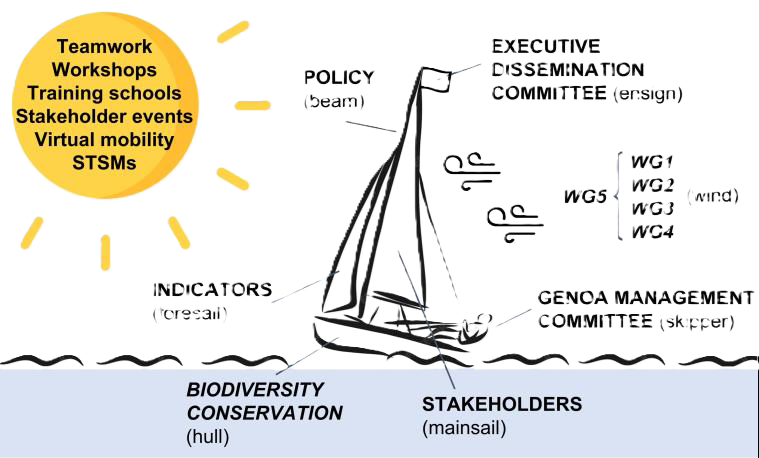Working Groups

The scientific work will be carried out in five Working Groups (WGs), each adhering to specific Research Coordination or/and Capacity Building Objectives. The Action strives to follow the JEDI (Justice Equity Diversity Inclusion) principles and to increase the inclusiveness and diversity of the team, promoting gender, age, and geographical balance amongst WGs, EDC, Core Group and Management Committee.
GENOA strongly focuses on fostering interdisciplinarity, empowering young researchers and continuing collaborations by targeting inter-sectorial public-private and international mobility, contributing to dual-career opportunities with stakeholder groups. GENOA covers multiple professional stages and levels of expertise and members can join more than one WG based on their interests. Scientific tasks and objectives of WGs will be tightly integrated through sharing scientific data, researchers through STSMs, ideas and approaches through participation in meetings and workshops and creating new knowledge via training schools will enhance transversal working. The interplay of the working groups, tasks, and activities to foster genetic diversity knowledge is visualised in the image below.
The main role of a foresail is to stabilise and increase performance and illustrate how improved genetic diversity knowledge will significantly increase efficiency of biodiversity conservation by using the outcomes of the five working groups and activities as well as in close interplay and tuning with policy and stakeholders.
Working Groups Members
| Country | Name | Organization |
|---|---|---|
| Albania | Fundime MIRI | Tirana University |
| Albania | Aida DERVISHI | University of Tirana |
| Armenia | Arsen GASPARYAN | INSTITUTE OF BOTANY AFTER A. TAKHTAJYAN OF NATIONAL ACADEMY OF SCIENCES OF REPUBLIC OF ARMENIA |
| Austria | Pamela BURGER | University of Veterinary Medicine Vienna |
| Austria | Berthold HEINZE | Federal Research Centre for Forests |
| Austria | Erich GRIESSLER | Institut Fur Hohere Studien – Institute For Advanced Studies |
| Austria | Elisabeth FRANKUS | Institut Fur Hohere Studien – Institute For Advanced Studies |
| Azerbaijan | Elvira TAHMAZLI | Baku State University Llc |
| Belgium | Fleur VISSER | University of Liege |
| Belgium | Joachim MERGEAY | Research Institute for Nature and Forest |
| Belgium | Karen COX | Research Institute for Nature and Forest |
| Belgium | Caroline MOUTON | Research Institute for Nature and Forest |
| Belgium | Io DEFLEM | Eigen Vermogen Van Het Instituut Voor Natuur- En Bosonderzoek |
| Belgium | Peter GALBUSERA | Royal Zoological Society of Antwerp |
| Bosnia & Herzegovina | Gordana DJURIC | Faculty of Agriculture, University of Banja Luka |
| Bosnia & Herzegovina | Dragana ŠNJEGOTA | Faculty of Natural Science and Mathematics University of Banja Luka |
| Bosnia & Herzegovina | Emina SUNJE | University of Sarajevo, Faculty of Natural Science – Faculty of Natural Science |
| Bosnia & Herzegovina | Adi HABUL | Environmental Fund of the Federation of BiH |
| Bosnia & Herzegovina | Belma KALAMUJIĆ STROIL | University of Sarajevo – Institute for Genetic Engineering and Biotechnology |
| Bosnia & Herzegovina | Lada LUKIĆ BILELA | University of Sarajevo – Faculty of Science |
| Brazil | Sibelle TORRES VILACA | Instituto Tecnológico Vale |
| Bulgaria | Maria KACHAMAKOVA | Institute of Biodiversity and Ecosystem Research – Bulgarian Academy of Sciences |
| Croatia | Vlatka CUBRIC-CURIK | University of Zagreb Faculty of Agriculture |
| Croatia | Lucija ŠERIĆ JELASKA | Faculty Of Science University Of Zagreb |
| Croatia | Andrea REZIC | Sveuciliste U Zagrebu Agronomski Fakultet |
| Czechia | Eva POKORNÁ | Forestry and Game Management Research Institute |
| Czechia | Lubos VOSTRY | Czech University of Life Sciences Prague |
| Czechia | Jarmila KROJEROVÁ | Institute of Vertebrate Biology, Czech Academy of Sciences |
| Czechia | Barbora ROLECKOVA | Czech Academy of Sciences – Institute of Vertebrate Biology |
| Czechia | Branka BILBIJA | Department of Biology and Wildlife Diseases – Veterinary University Brno |
| Denmark | Christina HVILSOM | Copenhagen Zoo |
| Denmark | Deon DE JAGER | University of Copenhagen |
| Denmark | Kristin LEUS | Copenhagen Zoo |
| Denmark | Christina RITZL VEJLGAARD | Copenhagen Zoo |
| Estonia | Tsipe AAVIK | University of Tartu |
| Faroe Islands | Sven WINTER | The University of the Faroe Islands |
| Finland | Aapo KAHILAINEN | Finnish Environment Institute |
| Finland | Kisun POKHAREL | Natural Resources Institute Finland |
| France | Ivan PAZ VINAS | Université Claude Bernard Lyon 1 (UCBL) |
| France | Myriam HEUERTZ | INRAE UMR BIOGECO |
| France | Santiago GONZALEZ-MARTINEZ | INSTITUT NATIONAL DE RECHERCHE POUR L’AGRICULTURE, L’ALIMENTATION ET L’ENVIRONNEMENT |
| France | Anouck CHAMPION | Université de Bordeaux |
| France | Pauline GARNIER-GÉRÉ | INRAE |
| France | Simon BLANCHET | CNRS – Délégation Occitanie Ouest |
| France | Iris LANG | Conservatoire Des Espaces Naturelsdu Languedoc Roussillon Association |
| France | frederic GRANDJEAN | UMR CNRS 7267 Ecologie Biologie des Interactions |
| Germany | Gernot SEGELBACHER | Albert-Ludwigs-Universität Freiburg |
| Germany | Sabrina TRÄGER | Martin Luther University Halle-Wittenberg |
| Germany | Henri THOMASSEN | Eberhard Karls Universität Tübingen |
| Germany | Julia GEUE | Albert-Ludwigs-Universität Freiburg |
| Germany | Camila MAZZONI | FORSCHUNGSVERBUND BERLIN E.V. |
| Germany | Wiebke SICKEL | Johann Heinrich von Thünen Institute of Biodiversity |
| Germany | Carlo PECORARO | Physalia-courses |
| Germany | Katharina Birgit BUDDE | Northwest German Forest Research Institute |
| Greece | Filippos ARAVANOPOULOS | Aristotle University of Thessaloniki – Aristotle Univrsity of Thessalonikie |
| Greece | Eleni ABRAHAM | Aristotle University of Thessaloniki |
| Greece | Maria KEROGLIDOU | University of Crete |
| Hungary | Szilvia KUSZA | University – University of Debrecen |
| Hungary | Bagi ZOLTÁN | Debreceni Egyetem |
| India | Laura BERTOLA | Tata Institute Of Fundamental Research*tifr |
| Ireland | Colin KELLEHER | National Botanic Gardens of Ireland |
| Ireland | Oliver STUART | University College Cork |
| Israel | Baruch RINKEVICH | National Institute of Oceanography |
| Israel | Gila KAHILA BAR-GAL | The Hebrew University of Jerusalem |
| Israel | Gal YAACOBI | The Agricultural Research Organisation Of Israel – The Volcani Centre |
| Israel | Shirli BAR-DAVID | Ben-Gurion University of the Negev |
| Italy | Cristiano VERNESI | Fondazione Edmund Mach |
| Italy | Massimiliano MORELLI | Consiglio Nazionale delle Ricerche – Istituto per la Protezione Sostenibile delle Piante |
| Italy | Chiara GAMBARDELLA | Università Politecnica delle Marche |
| Latvia | Dainis RUNGIS | Latvijas Valsts Mezzinatnes Instituts Silava |
| Latvia | Jeļena OREHA | Daugavpils Universitate |
| Latvia | Solvita RŪSIŅA | The University of Latvia |
| Lithuania | Rita VERBYLAITE | Lithuanian Research Centre for Agriculture and Forestry |
| Lithuania | Darius KAVALIAUSKAS | Vytautas Magnus University |
| Lithuania | Yanal ALKUDDSI | Lithuanian Research Centre for Agriculture and Forestry |
| Lithuania | Yaqoob SULTAN | Lithuanian Research Centre for Agriculture and Forestry |
| Luxembourg | Alain FRANTZ | Ministère de la Culture |
| Luxembourg | Anna SCHLEIMER | Administration de la gestion de l’eau |
| Malta | Dorita GALEA AGIUS | University of Malta |
| Moldova | Serghei SPRINCEAN | Institute of Social-Political Research “Democratia” |
| Netherlands | Philippine VERGEER | Wageningen University |
| Netherlands | Alice ALBERTINI | EAZA |
| North Macedonia | Cvetanka STOJCHEVSKA | Faculty of Natural Sciences and Mathematics |
| North Macedonia | Renata ĆUŠTEREVSKA | Ss. Cyril and Methodius University of Skopje |
| Norway | Joost RAEYMAEKERS | Nord Universitet |
| Norway | Lucia SAINZ ESCUDERO | Nord University |
| Norway | Xiatong CAI | Nord Universitet |
| Norway | Alexander KOPATZ | Stiftelsen Norsk Institutt For Naturforskning Nina |
| Palestinian Territories | KAMEL JEBREEN | Palestine Technical University – Kadoorie |
| Poland | Maciej K. KONOPINSKI | Institute of Nature Conservation, Polish Academy of Sciences |
| Poland | Aleksandra BIEDRZYCKA | Polish Academy of Sciences – Institute of Nature Conservation |
| Poland | Agnieszka OLSZANSKA | Institute of Nature Conservation, Polish Academy of Sciences |
| Poland | Agata PIETRZYK-KASZYŃSKA | Institute of Nature Conservation, Polish Academy of Sciences |
| Poland | Artur GURGUL | University of Agriculture |
| Poland | Martyna LASEK | Institute of Dendrology Polish Academy of Sciences |
| Poland | Joanna KOLODZIEJCZYK | Institute of Nature Conservation, Polish Academy of Sciences |
| Portugal | Margarida LOPES-FERNANDES | Instituto Da Conservacao Da Natureza E Das Florestas Ip |
| Portugal | Catarina NUNES SOARES SILVA | University of Coimbra |
| Portugal | Paulo Célio ALVES | Porto University – Faculdade de Ciências & CIBIO, Universidade do Porto |
| Portugal | Eduardo FERREIRA | University of Aveiro |
| Portugal | Sara LOURENÇO | UNIVERSIDADE DE COIMBRA |
| Portugal | Filipa BORGES | Centre for Research in Anthropology |
| Romania | Mihai FEDORCA | Universitatea Transilvania Din Brasov |
| Romania | Ancuta FEDORCA | Institutul National De Cercetare Dezvoltare In Silvicultura Marin Dracea |
| Romania | Sean HOBAN | Institutul National De Cercetare Dezvoltare In Silvicultura Marin Dracea |
| Romania | Elena CIOCIRLAN | Universitatea Transilvania Din Brasov |
| Romania | Iulia BACIU | Institutul National De Cercetare Dezvoltare In Silvicultura Marin Dracea |
| Serbia | Marina NONIC | University of Belgrade – Faculty of Forestry |
| Serbia | Miroslav UROSEVIC | Univerzitet u Novom Sadu, Poljoprivredni fakultet Novi Sad |
| Serbia | Ivona KERKEZ JANKOVIĆ | Faculty of Forestry |
| Serbia | Milomir STEFANOVIC | University of Novi Sad Faculty of Sciences |
| Serbia | MIRJANA SIJACIC-NIKOLIC | Faculty of Forestry |
| Serbia | Filip MAKSIMOVIĆ | Institute for Multidisciplinary Research |
| Serbia | Ivana MATIC | Faculty of Sciences (University of Novi Sad) |
| Slovakia | Peter KLINGA | Technical University in Zvolen |
| Slovakia | Peter KAŇUCH | Institute of Forest Ecology, Slovak Academy of Sciences |
| Slovenia | Irena MAČEK | University of Ljubljana |
| Slovenia | Elena BUZAN | UNIVERZA NA PRIMORSKEM UNIVERSITA DEL LITORALE |
| Slovenia | Marjana WESTERGREN | Slovenian Forestry Institute |
| South Africa | Jessica DA SILVA | South African National Biodiversity Institute |
| Spain | Marta VILA | Universidade da Coruna |
| Spain | Laura TORRADO-BLANCO | Universidade da Coruna |
| Spain | Carles VILÀ | Spanish National Research Council – Doñana Biological Station |
| Spain | Jose A. GODOY | Spanish National Research Council – Doñana Biological Station |
| Spain | Peter PEARMAN | Universidad del País Vasco |
| Spain | Laia PÉREZ SORRIBES | Estación Biológica de Doñana |
| Spain | Nuria SANZ BALL-LLOSERA | Universitat De Girona |
| Sweden | Linda LAIKRE | Stockholm University |
| Sweden | Robert EKBLOM | Naturvardsverket |
| Sweden | Henrik THURFJELL | Swedish University of Environmental Scienses (SLU) |
| Switzerland | Rea PAERLI | Eidgenossische Forschungsanstalt Wsl |
| Switzerland | Christine GROSSEN | Eidgenossische Forschungsanstalt Wsl |
| Switzerland | Alice BRAMBILLA | University of Zurich |
| Switzerland | Julia BARTH | Universitat Basel |
| Switzerland | Mathias CURRAT | Université de Genève |
| Switzerland | Robert WATERHOUSE | Sib Swiss Institute Of Bioinformatics |
| Switzerland | Alexandra Anh-Thu WEBER | Eawag – Swiss Federal Institute of Aquatic Science and Technology |
| Switzerland | Chiara BORTOLUZZI | Sib Swiss Institute Of Bioinformatics |
| Türkiye | Tamer ALBAYRAK | Dokuz Eylul Universitesi |
| Türkiye | MEHMET KURSAT SAHIN | Hacettepe Universitesi |
| Türkiye | Mert KUKRER | Middle East Technical University |
| Türkiye | Rafet Cagri OZTURK | Karadeniz Teknik Üniversitesi |
| Türkiye | Hüseyin INCEER | Karadeniz Teknik Universitesi |
| Türkiye | Islam GUNDUZ | Ondokuz Mayıs University |
| Türkiye | Cengiz YÜCEDAĞ | Burdur Mehmet Akif Ersoy Üniversitesi |
| United Kingdom | Isa-Rita RUSSO | Cardiff University |
| United Kingdom | Roberta GARGIULO | Royal Botanic Gardens Kew |
| United Kingdom | David O’BRIEN | NatureScot (Scottish Natural Heritage |
| United Kingdom | Alicia MASTRETTA-YANES | Royal Botanic Gardens Kew |
| United Kingdom | Alex CARR | Cardiff University |
| United Kingdom | Frank HAILER | Cardiff University |
| United States | Jill HAMILTON | The Pennsylvania State University |

